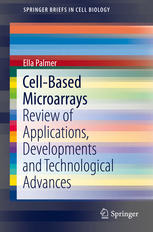

Most ebook files are in PDF format, so you can easily read them using various software such as Foxit Reader or directly on the Google Chrome browser.
Some ebook files are released by publishers in other formats such as .awz, .mobi, .epub, .fb2, etc. You may need to install specific software to read these formats on mobile/PC, such as Calibre.
Please read the tutorial at this link: https://ebookbell.com/faq
We offer FREE conversion to the popular formats you request; however, this may take some time. Therefore, right after payment, please email us, and we will try to provide the service as quickly as possible.
For some exceptional file formats or broken links (if any), please refrain from opening any disputes. Instead, email us first, and we will try to assist within a maximum of 6 hours.
EbookBell Team

4.7
96 reviewsThis book is a review on the evolution of cell-based microarrays and an update to the author's earlier book Methods in Molecular Biology: Cell-Based Microarrays. Since their development in 2001, cell-based microarrays have advanced significantly to include expression arrays, short interfering RNA arrays and antibody arrays. The surface used to coat the glass slides has also been significantly improved to allow non-adherent cells to bind to the arrays.